Transporting hazardous materials is a sensitive process that requires precision and extra caution. Choosing the right hazardous materials transport vehicle is crucial to ensure the safe transportation of these goods. The vehicle chosen must meet specific requirements and standards to minimize the risk of accidents or incidents.
Before selecting a vehicle, it is crucial to understand the guidelines and regulations set by the Department of Transportation (DOT) for transporting hazardous materials. These regulations cover aspects such as labeling, packaging, and handling procedures to ensure the safety of both the goods and the people involved in the transportation process.
Key Takeaways:
- The right hazardous materials transport vehicle is essential to ensure the safe transportation of hazardous goods.
- Understanding guidelines and regulations set by DOT is vital before choosing the vehicle for transportation.
- The vehicle must meet specific requirements and standards to minimize the risk of accidents or incidents.
Table of Contents
Understanding Hazardous Materials Transport Guidelines
When it comes to transporting hazardous materials, safety should always be the primary concern. To ensure that everyone involved in the transportation process remains safe, there are strict guidelines and regulations that must be followed.
The main objective of these guidelines is to minimize the risk of accidents, injuries, and damage to property during transportation. One of the key aspects of these guidelines is to ensure that hazardous materials are properly labeled, packaged, and handled.
Proper labeling is critical as it provides clear and concise information about the material being transported, including any potential hazards. This information helps to ensure that everyone involved in the transportation process is aware of the risks and can take necessary precautions.
The packaging of hazardous materials is also crucial as it must be able to withstand the conditions of transportation and prevent leaks or spills. Additionally, it must be compatible with the material being transported to prevent any dangerous reactions.
Another important aspect of hazardous materials transport guidelines is the handling procedures. Proper handling procedures ensure that the material is loaded and unloaded safely and that it is secured throughout the transportation process.
Overall, understanding and following hazardous materials transport guidelines is essential for ensuring the safety of everyone involved in the transportation process. By following these guidelines, you can minimize the risk of accidents, protect the environment, and ensure that your transportation operations comply with relevant regulations.
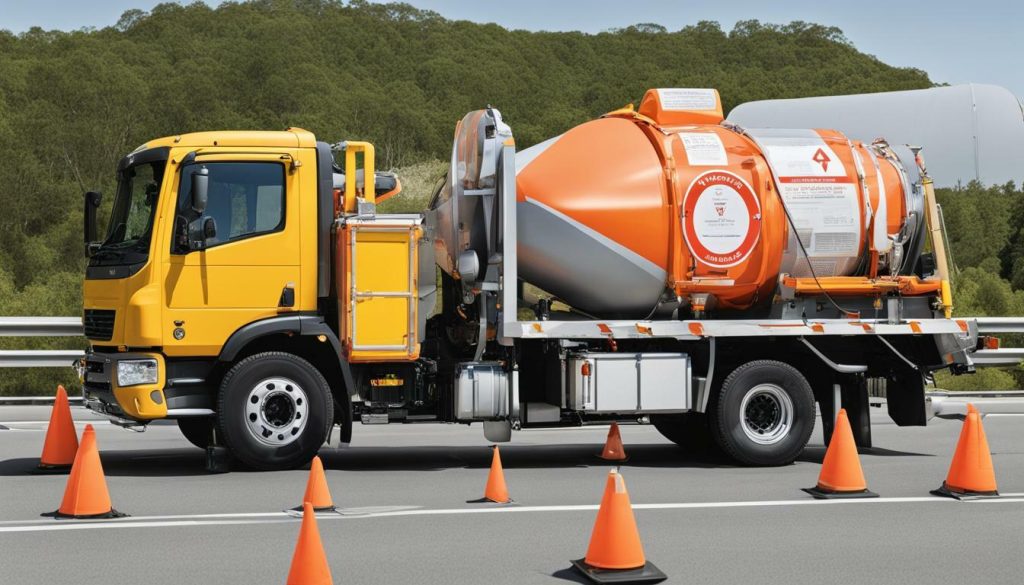
Compliance with Hazmat Vehicle Regulations
When it comes to transporting hazardous materials, compliance with regulations is crucial to ensure the safety of everyone involved. The Department of Transportation (DOT) has set specific regulations, known as DOT hazmat regulations, that must be followed by all hazmat vehicles. These regulations outline the requirements for the design, construction, maintenance, and operation of these vehicles to ensure they safely transport hazardous materials.
To comply with hazmat vehicle regulations, all vehicles must have the necessary permits, certifications, and inspections. Failure to comply with these regulations can result in fines, penalties, and even legal action. It’s essential to have a clear understanding of these regulations to avoid any risks and maintain safety during transportation.
The DOT hazmat regulations classify hazardous materials by their level of danger and specify the requirements for each class. For instance, Class 1 materials, such as explosives, have more stringent regulations than Class 3 materials, such as flammable liquids. It’s essential to know the specific requirements for each class to ensure compliance and avoid any legal consequences.
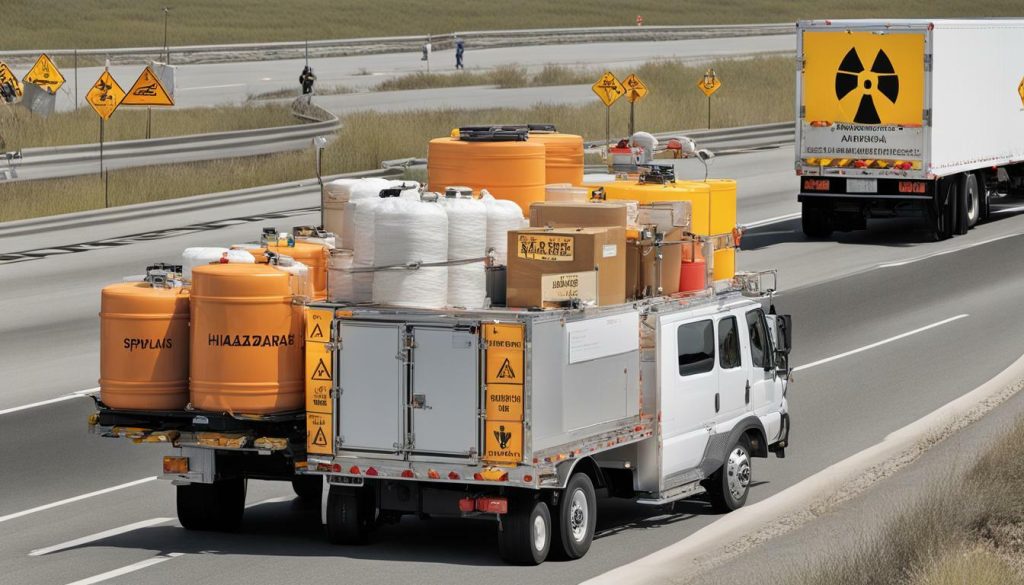
Additionally, compliance with hazmat vehicle regulations requires proper training for personnel involved in the transportation process. This includes understanding the hazards associated with the materials being transported and the proper procedures for handling them. Regular inspections and maintenance are also necessary to ensure the vehicle is in good condition and able to transport hazardous materials safely.
Factors to Consider When Choosing a Hazardous Materials Transport Vehicle
Transporting hazardous materials requires a specialized approach to ensure safety and compliance with regulations. Therefore, choosing the right hazardous materials transport vehicle is vital. Besides selecting a vehicle that meets your transportation needs, you also need to consider various factors to ensure safe and legal transport.
Hazardous Materials Transport Vehicle Requirements
One critical factor to consider when choosing a hazardous materials transport vehicle is its compliance with transportation regulations. It’s important to understand and follow the standards set by the Department of Transportation (DOT) to avoid legal and safety issues. The DOT sets specific requirements for markings, placards, and labels that must be visible on the vehicle, indicating the nature of the hazardous material being transported.
Moreover, certain vehicles are only authorized to transport specific materials, depending on their capacity, compatibility, and design. Therefore, before selecting a vehicle, it’s important to make sure that it can legally transport the hazardous materials you intend to move.
Hazmat Vehicle Permits
Another critical requirement for hazmat vehicles is obtaining the appropriate permits for transportation. Depending on the type of hazardous material being transported, various permits, licenses, or certifications may be required. The DOT’s Pipeline and Hazardous Materials Safety Administration (PHMSA) issues permits to ensure that vehicles transporting hazardous materials meet the necessary safety standards and prevent potential accidents or incidents. Failure to obtain the required permits can result in severe penalties, fines, or legal action.
Specialized Equipment
When transporting hazardous materials, it’s important to select a vehicle that is equipped to handle the specific material being transported. For instance, some materials require temperature-controlled environments, while others need specialized loading or unloading equipment. Therefore, it’s essential to consider the type of hazardous material being transported and select a vehicle that is adequately equipped to transport it safely.
Capacity
The capacity of the vehicle is also an important factor to consider when selecting a hazardous materials transport vehicle. It’s crucial to ensure that the vehicle can carry the required amount of material without exceeding the legal weight limits. Overloading a vehicle can lead to accidents, equipment failure, and road damage. Therefore, it’s essential to choose the right size and capacity of the vehicle for your transport needs.
Choosing the right hazardous materials transport vehicle is critical for the safe and legal transportation of hazardous materials. By considering the above factors, you can ensure that you select a vehicle that meets all regulations, requirements, and safety standards to transport hazardous materials securely and efficiently.

Types of Hazardous Materials Transport Vehicles
When it comes to hazardous materials transportation, choosing the right type of vehicle is crucial. Various factors such as the type of material, quantity, and distance to be covered need to be considered. Here are some of the most common types of hazardous materials transport vehicles:
| Vehicle Type | Description |
|---|---|
| Truck trailers | These are the most commonly used vehicles for hazardous materials transportation. They can have single or multiple compartments, allowing for the transportation of different materials simultaneously. |
| Tank trucks | These vehicles are specifically designed for the transportation of liquids and gases in bulk quantities. They are well insulated and have reinforced walls to prevent leaks or spills. |
| Rail cars | These are used for transporting hazardous materials across long distances. They are built to withstand extreme weather conditions and have extensive safety features. |
| Intermodal containers | These are versatile containers that can be transported by different modes of transportation, including ships, trains, and trucks. They are particularly useful for international transportation. |
It is important to note that each type of vehicle has its own set of requirements and restrictions. For example, tank trucks and trailers must have adequate ventilation, while rail cars need to be inspected regularly to ensure proper maintenance.
When choosing a hazardous materials transport vehicle, consider the specific requirements of the materials being transported and the regulations that apply to the type of vehicle. Working with a qualified and experienced transporter can help ensure compliance with all regulations and guidelines.
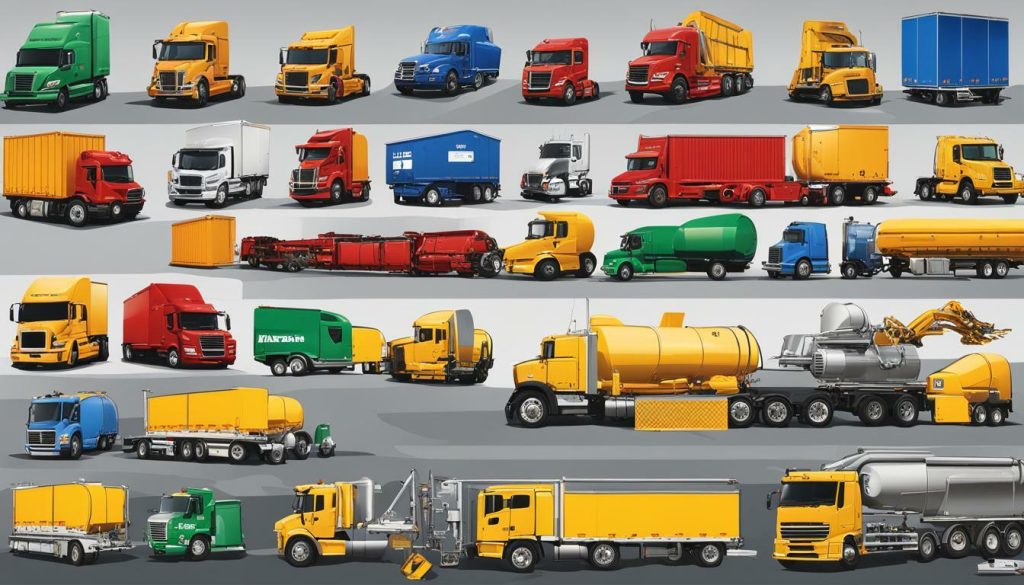
Ensuring Safety Measures in Hazardous Materials Transportation
Transporting hazardous materials can be a risky business. It’s crucial to take all necessary precautions to minimize the risks of accidents or incidents during transportation. Safety measures must be implemented to mitigate potential hazards and to protect both the goods and the people involved in the process.
To ensure safe transportation, personnel involved in the transportation must be trained properly and regularly. They should be aware of the different hazardous materials and the risks associated with them. This knowledge will help them take the necessary precautions while handling and transporting hazardous materials.
Regular inspections of vehicles, equipment, and containers are critical to ensure their safety. Before, during, and after transportation, inspections must be conducted to ensure that the vehicles and equipment are functioning correctly and there are no leaks or damage. Regular maintenance and repair work must be carried out to prevent any unforeseen issues or breakdowns during transportation.
During transportation, hazardous materials must be kept away from incompatible substances and sources of ignition. Proper packaging and labeling must be done to reduce the risk of spills or leaks. All hazardous materials must be transported in vehicles specifically designed for that purpose. Hazmat vehicles are specially designed and equipped to transport hazardous materials, and they must meet all applicable regulations and standards to maintain safety.
It’s essential to have contingency plans in place in case of accidents or incidents during transportation. The plans must specify the procedures to be followed in case of a spill or a leak and must also identify the appropriate response team to be called for assistance. All personnel involved in transportation must be trained in implementing these contingency plans.
Overall, ensuring safety measures during hazardous materials transportation is critical to protecting the environment, the general public, and the people involved in the transportation process. Failure to follow safety guidelines can lead to catastrophic consequences, including injury, environmental contamination, and legal consequences.
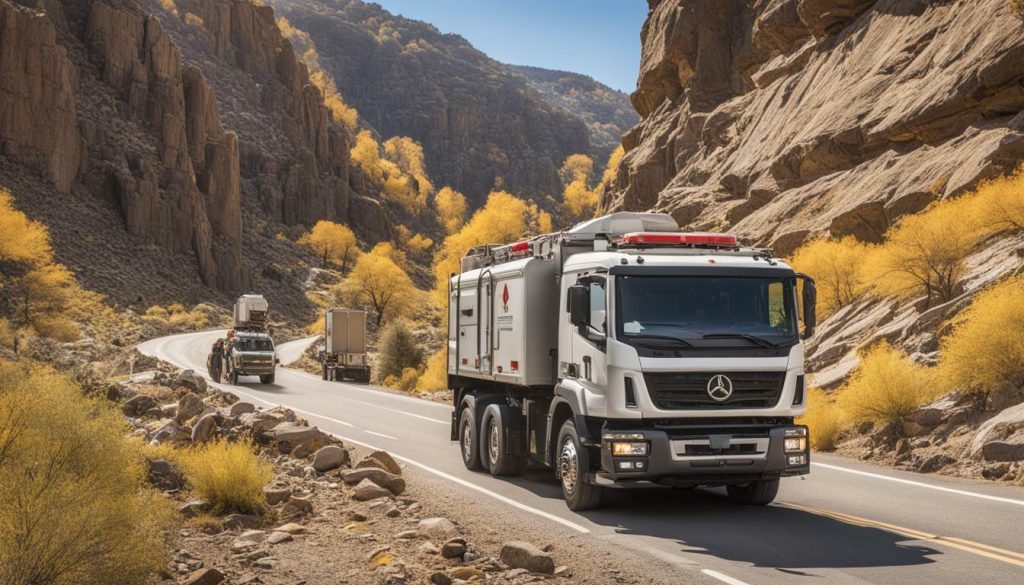
Ensuring Safety Measures in Hazardous Materials Transportation
When it comes to transporting hazardous materials, safety measures should always be a top priority. In addition to choosing the right hazardous materials transport vehicle, it is vital to implement proper safety procedures throughout the transportation process.
One key aspect of ensuring safety in hazardous materials transportation is training personnel. All individuals involved in handling and transporting hazardous materials should receive the appropriate training to understand the risks involved and the necessary precautions that must be taken.
Regular inspections of hazardous materials transport vehicles are also crucial in maintaining safety. Inspections can help identify potential issues before they become major problems that could compromise the integrity of the vehicle. Make sure to conduct inspections before and after every trip and address any issues immediately.
It is essential to keep hazardous materials transport vehicles well-maintained as well. Regular maintenance can prevent breakdowns and other issues that could lead to accidents during transportation.
By prioritizing safety measures in hazardous materials transportation, you can help ensure not only the safety of the goods being transported but also the people involved in the process.
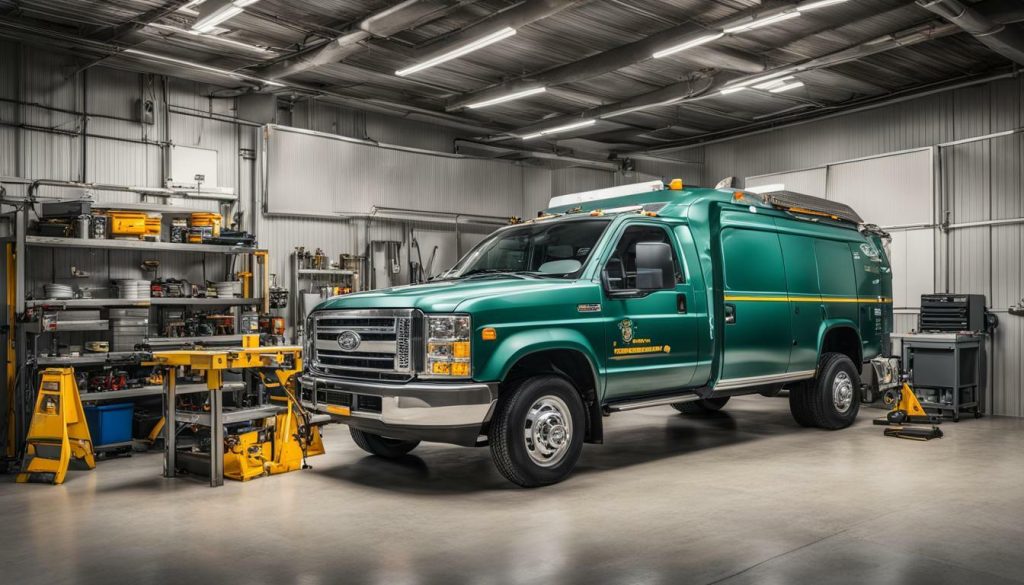
Conclusion
Transporting hazardous materials can be a complex and risky process, but by following the right guidelines and regulations, and choosing the right transport vehicle, you can greatly minimize potential hazards and ensure safety for everyone involved in the transportation process.
By understanding the requirements and standards for transporting hazardous goods, you can make the best decision on which hazardous materials transport vehicle to use, and what safety measures to take. Following proper labeling, packaging, and handling procedures, as well as obtaining necessary permits, are crucial for complying with DOT regulations, avoiding legal issues, and keeping everyone safe.
Choosing a hazardous materials transport vehicle requires careful consideration of factors such as capacity, compatibility, and specialized equipment to ensure proper transportation. Additionally, implementing safety measures and conducting regular maintenance and inspections can help you identify and address any potential issues, ultimately reducing the risk of accidents or incidents during transportation.
Overall, by taking the necessary precautions and understanding the key factors involved in transporting hazardous materials, you can ensure safe transportation and protect everyone involved in the process.
FAQ
Q: Why is it important to choose the right hazardous materials transport vehicle?
A: Choosing the right hazardous materials transport vehicle is crucial for ensuring the safety of the goods being transported and the people involved in the process. It helps minimize the risk of accidents, spills, or leaks, which can have severe consequences.
Q: What guidelines should be followed when transporting hazardous materials?
A: When transporting hazardous materials, it is essential to follow proper labeling, packaging, and handling procedures. This ensures that the materials are transported safely, minimizing the risk of damage or exposure.
Q: What regulations are there for hazmat vehicles?
A: The Department of Transportation (DOT) has set specific regulations for the transportation of hazardous materials. These regulations outline the requirements that hazmat vehicles need to meet to ensure compliance and avoid legal issues.
Q: What factors should be considered when choosing a hazardous materials transport vehicle?
A: When selecting a hazardous materials transport vehicle, it is important to consider factors such as capacity, compatibility with the materials being transported, and the availability of specialized equipment. Additionally, obtaining the necessary permits for transporting hazardous materials legally is crucial.
Q: What are the different types of hazardous materials transport vehicles?
A: There are various types of hazardous materials transport vehicles available, each with its own design, features, and capabilities. Understanding these variations can help determine the most suitable vehicle for specific transportation needs.
Q: What safety measures should be implemented during hazardous materials transportation?
A: It is important to implement safety measures such as training personnel, conducting regular inspections, and maintaining vehicles properly. These measures help minimize the risk of accidents or incidents during transportation and ensure the overall safety of the process.
Q: Why is regular maintenance and inspections important for hazardous materials transport vehicles?
A: Regular maintenance and inspections are crucial for ensuring the safety and integrity of hazardous materials transport vehicles. By staying proactive in identifying and addressing potential issues, the risk of accidents or incidents during transportation can be significantly reduced.


